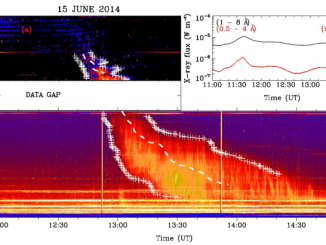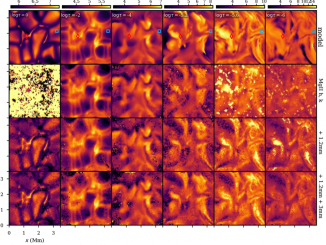Source Imaging of a Moving Type-IV Solar Radio Burst and its Role in Tracking Coronal Mass Ejection From the Inner to the Outer Corona
by Y. Chen et al.
T-IV solar radio bursts are wideband continuum observed with dynamic spectrographs at metric to decametric wavelengths. They can be classified into static and moving ones, according to whether the sources remain basically static or move outward. The static ones are related to solar flares with frequencies extending up to GHz, while the moving ones (T-IVms) are related to coronal mass ejections (CMEs) with frequencies sometimes shifting to tens of MHz. […]


